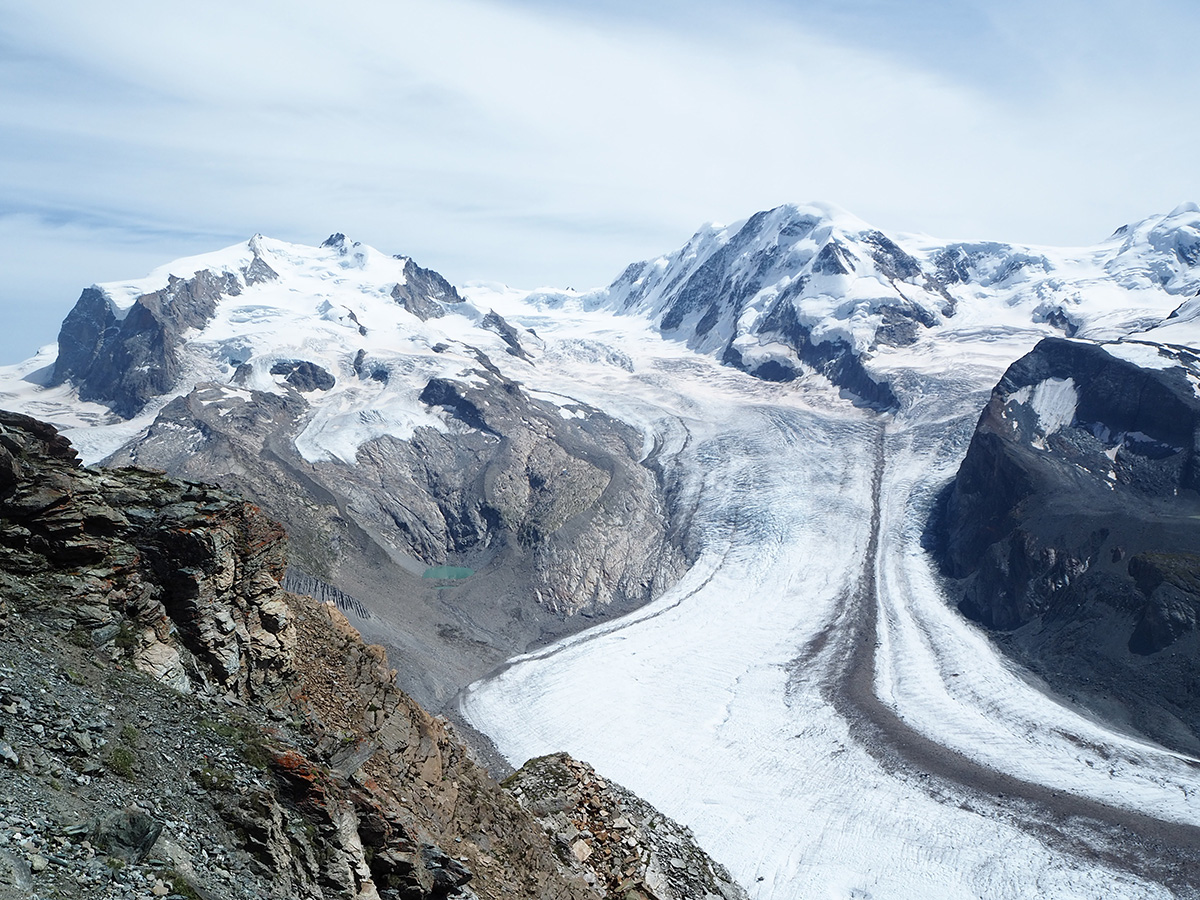
Monte Rosa, the second highest mountain in the Alps at 4,634m (left), towers over Zermatt’s Gorner Glacier. Lyskamm (right) is another of the 33 peaks higher than 4,000m surrounding Zermatt. Photograph taken from the Gornergrat observatory station by Isabella Sheherazade Sanai
Zermatt, in Switzerland, has mountain views and activities that are the stuff of legend. It also has the highest altitude luxury hotel in Europe. Darius Sanai checks in and is mesmerised
We arrived for our stay in Riffelalp Resort 2222m by taking four trains from Zurich, each one more quaint and tiny than the previous. The first was a double-deck express that arrowed smoothly through luscious lowlands and past lakes; alighting at the bottom of a deep valley at Visp, we changed to a more pared-back, basic train that made its way up a narrow, steeply inclined V-shaped valley, more gorge than valley in places. Shards of rock sat on the valley floor among trees and cows, a fast-flowing river accompanied us upwards. There were glimpses, as we ascended, of glaciers and snowy peaks, even in mid-summer.
Follow LUX on Instagram: luxthemagazine
Arriving at the top of the valley in Zermatt, we crossed a tiny station square, gazing up at the citadel of the Matterhorn looming over the village like a rock god. The next train was a cog railway, which headed in a meandering zigzag through the larch forest up the valley sides; we crossed over a high iron bridge above a waterfall, in and out of deep larch groves, the ground disappearing below us.
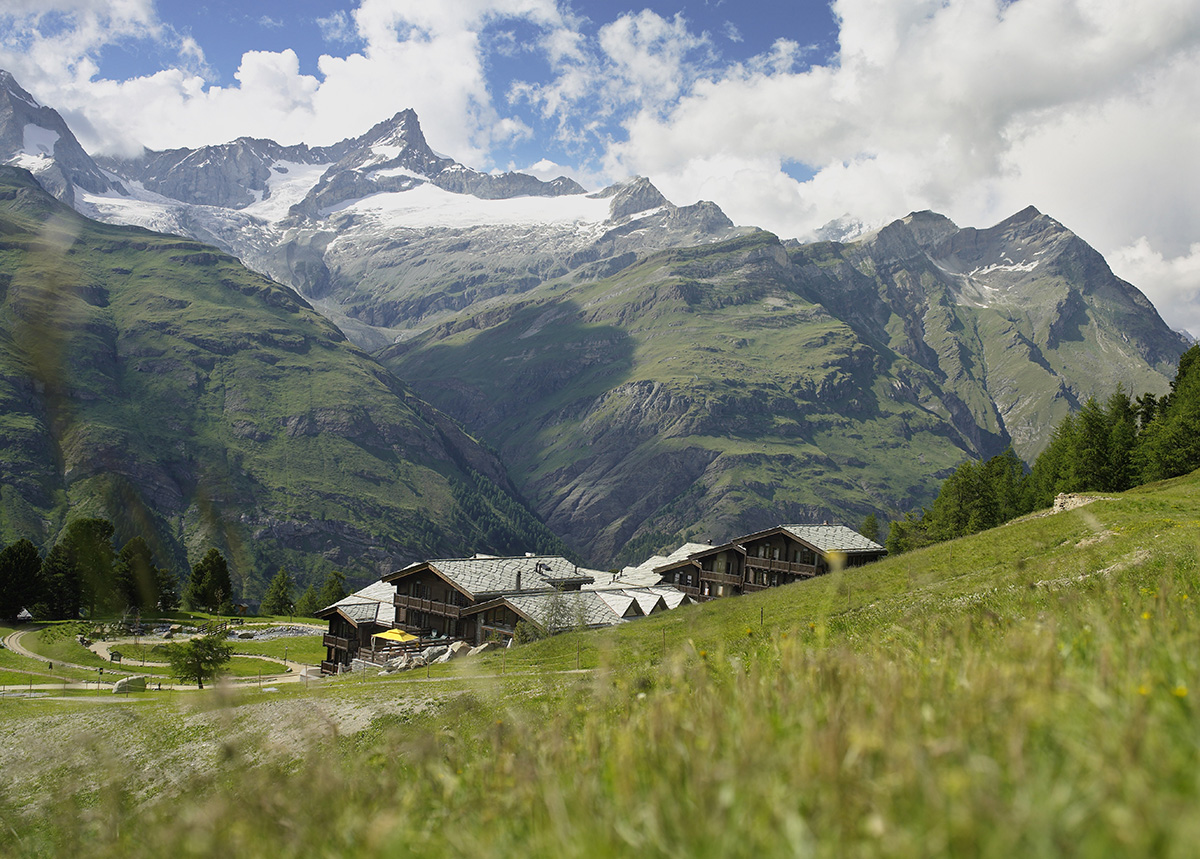
The Riffelalp Resort 2222m sits high above Zermatt in the valley below, with views of the surrounding peaks, including the Matterhorn
After 15 minutes, and feeling a lightness in the air, we emerged at Riffelalp station, right on the tree line. On the other side of the open-air ticket barrier was a tiny, open, narrow-gauge train, and a smiling drive/porter in full uniform, with a peaked cap. This little train, more toy than real, with no windows and waist-height doors, had room for around 20 people and a little luggage. It ground along a mountain path through the forest, at little more than jogging pace, for five minutes, as we were enmeshed in the aromas of pine cones and herbs, until it reached a clearing. Here, 600m above the valley floor, at a height of 2,222m (thus the name) we were greeted with a cluster of pretty Alpine chalets and a view, across and above the confluence of three glacial valleys, over to the Matterhorn, and several other peaks, lit only by moonlight and starlight, glaciers staring at us from across the dark night-time green haze.
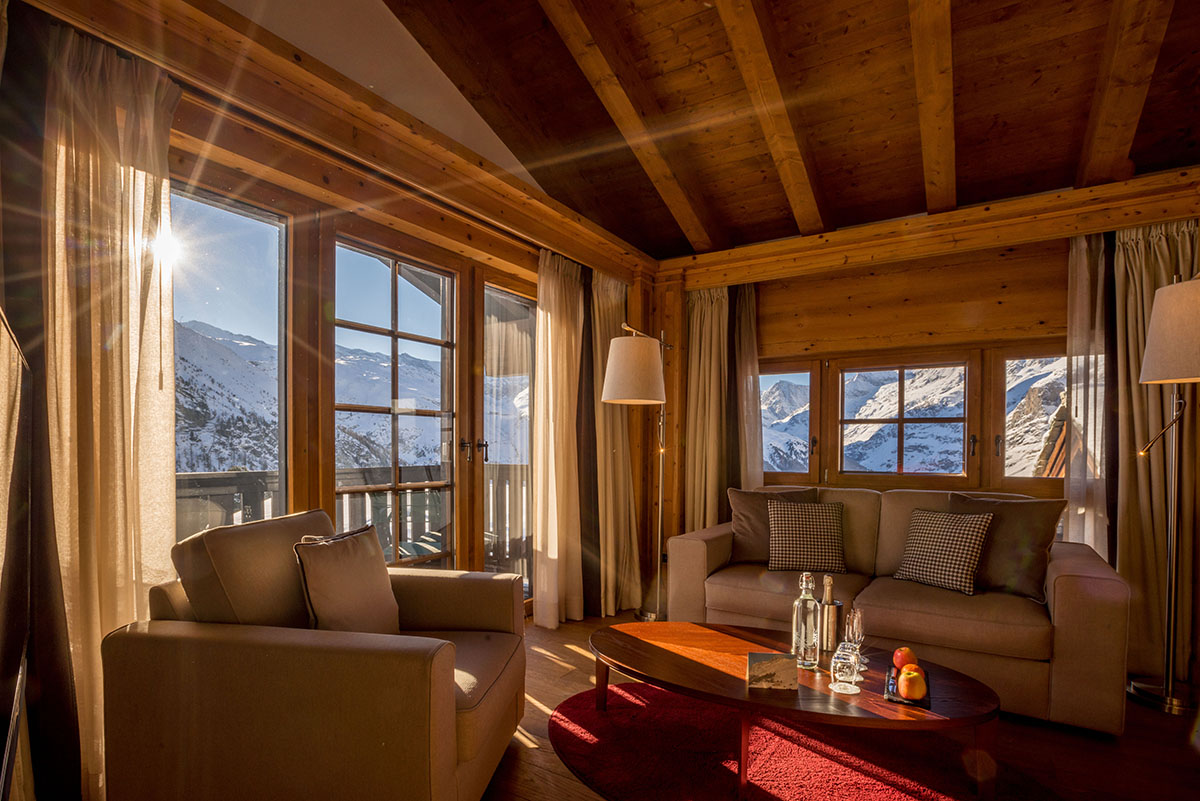
Bedrooms at Riffelalp benefit from sweeping views over the mountain peaks
If the view was mind-bending, stepping inside the hotel was even more so. For this was no high-altitude mountain hut; we were inside a luxury palace hotel, beautifully created with Alpine woods and finishes, with a long and wide corridor leading down from the lobby area, past a jazz bar with a live band, and towards a restaurant, whose large windows perfectly framed the night-time Matterhorn. All the details were done beautifully, from the lighting, to the granite, wood and artisanal tables in the gently curving lobby/corridor area, whose large windows perfectly framed the mountains: at night, you could spot the helmet lights of the climbers on the Matterhorn.
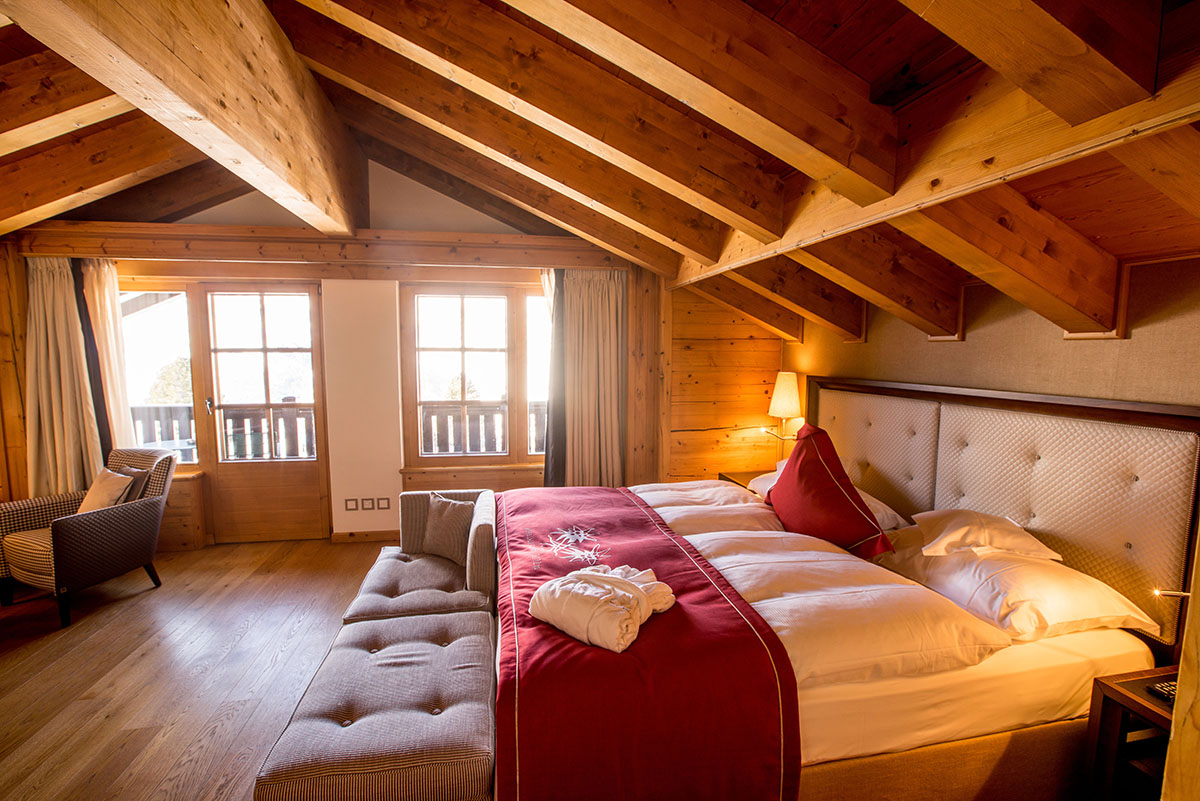
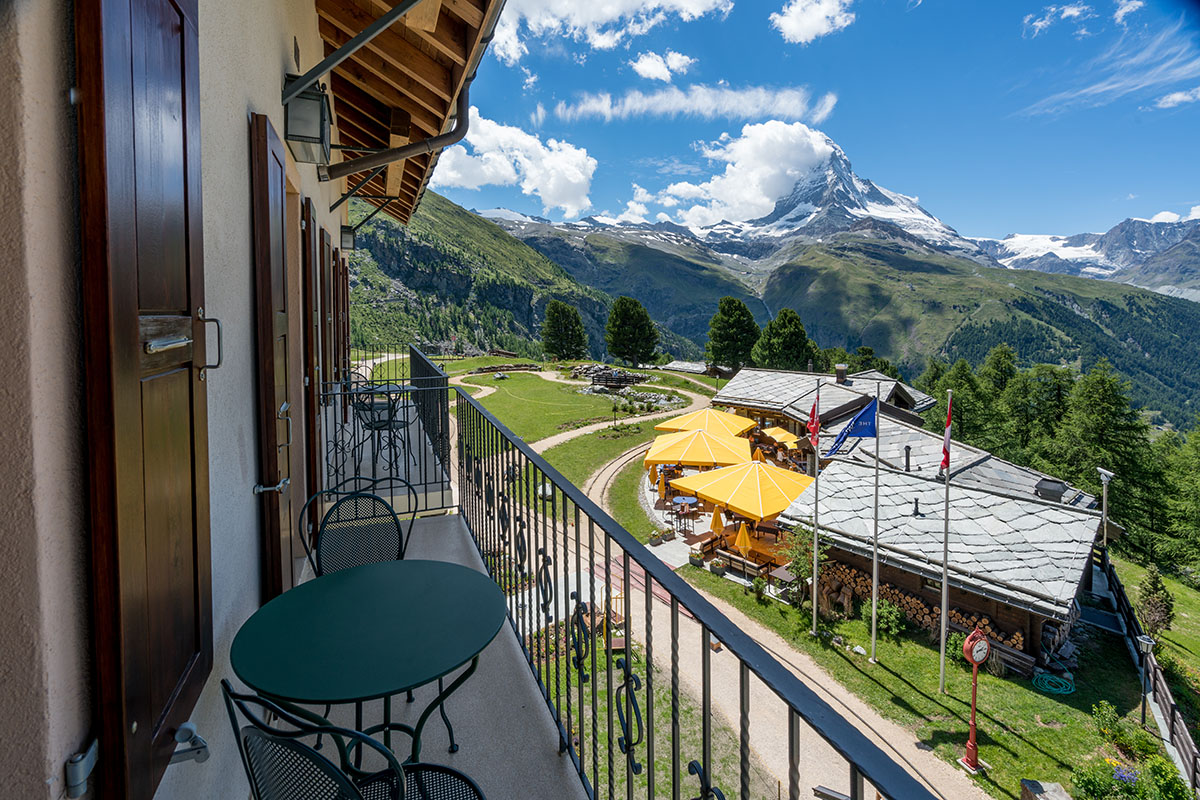
One of the resort’s bedrooms (above), and (here) views of the Matterhorn from the terrace
We stayed in the Matterhorn suite, an L-shaped series of rooms, decorated in blonde woods with contemporary furnishings, each of which had a balcony looking out over the high-altitude drama of a dozen peaks of more than 4,000m. This is the highest luxury hotel in Europe, and from the bedroom balcony, it certainly felt it. The granite and marble master bathroom was a masterpiece of design and sheer size – in contrast to many Alpine mountain hotels’ compact dimensions.
Read more: Back to school with Van Cleef & Arpels
What was particularly compelling about the resort is that it is just that: a place you don’t need to leave. On the roof of one of the buildings is an indoor and outdoor pool and sun terrace – it gets surprisingly warm on a summer afternoon, notwithstanding the altitude. Inside is a spa. There is a bowling alley, table tennis, billiards, trampolines in a play area outside, and perhaps our favourite part was the garden terrace downstairs.
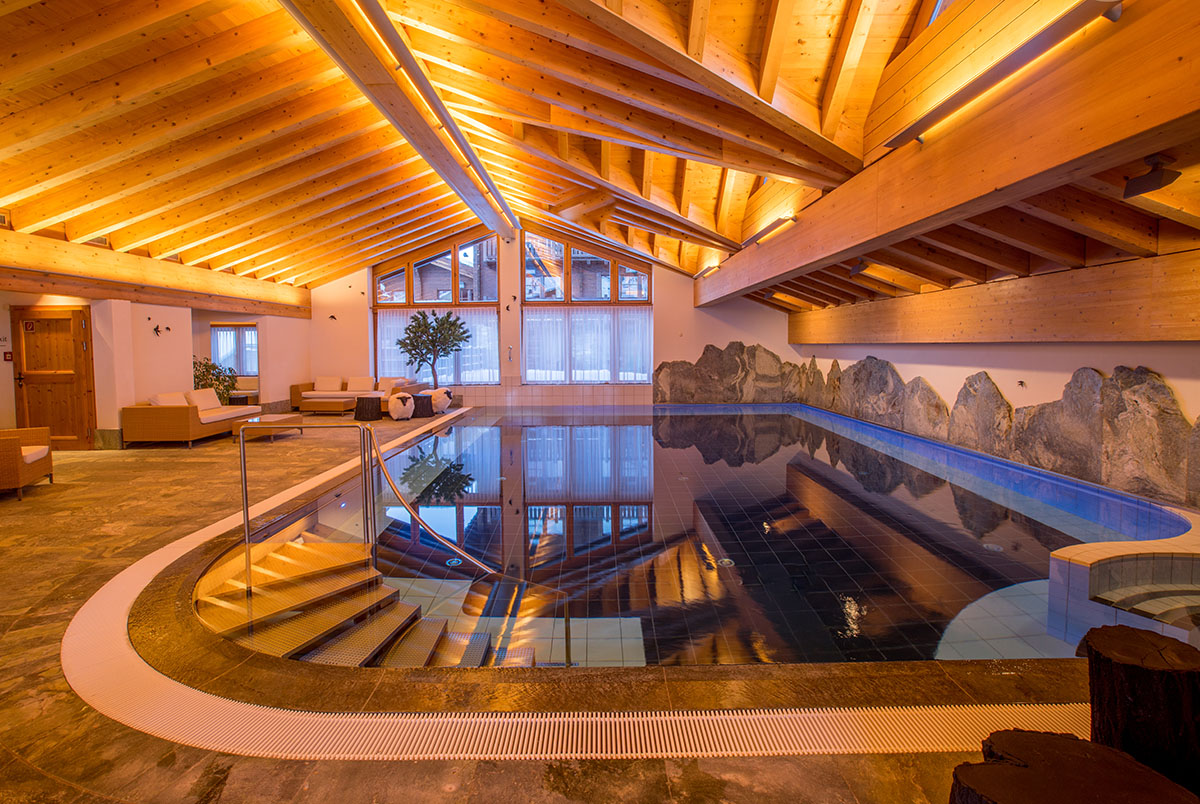
The indoor swimming pool at the hotel’s spa
The buildings are located just where the trees start to peter out, giving way to high-altitude grass and tundra, meaning you can sit at a table outside the hotel, watching hikers and climbers go past during the day while sipping a glass of wine – and you have the mountain to yourself at night. Kicking back with a drink after a long hike, as the sunset turns ever more blue, watching the other tourists disappear down the valley to Zermatt, or the serious climbers striding on and upwards towards their bivouacs, is an infinitely relaxing feeling.
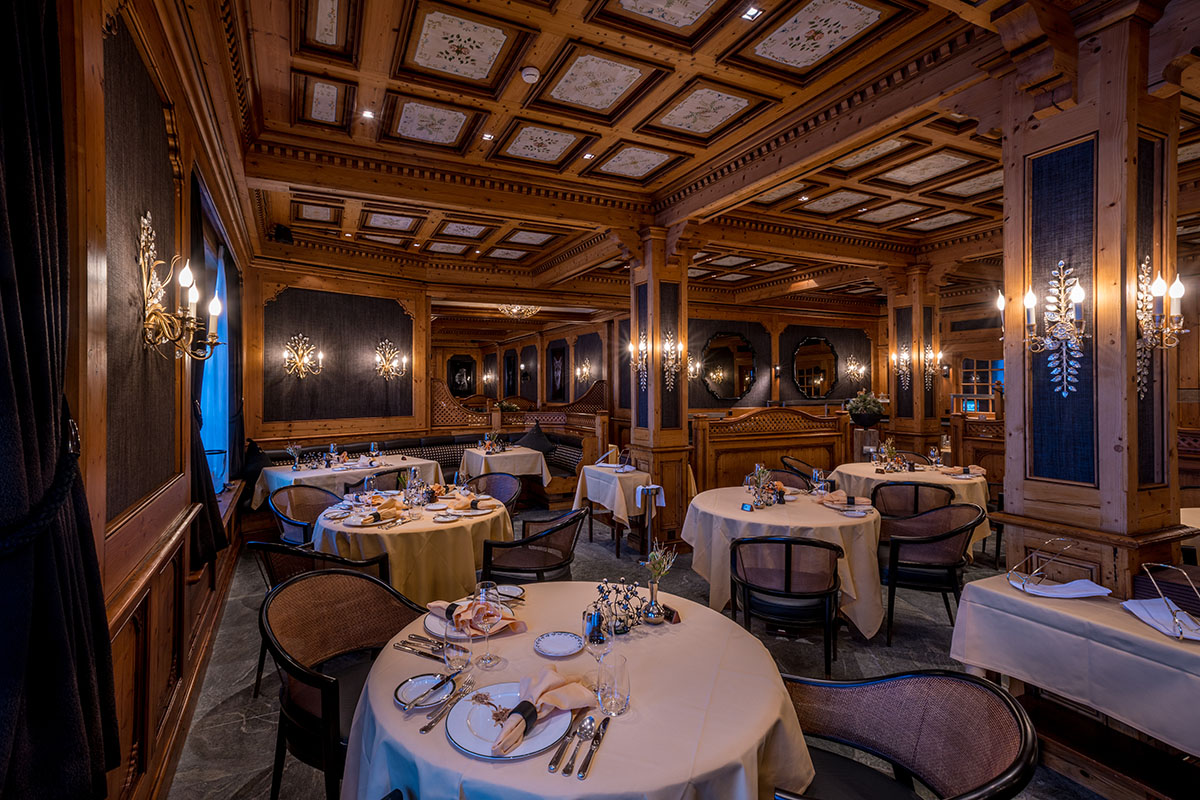
The Alexandre restaurant serves fresh, light Alpine cuisine
There are three restaurants and a bar (the two main restaurants are open in summer). The Alexandre is the one in the main hotel building and any fears that it will be an old-fashioned Swiss grand restaurant serving heavy cream and food are quickly dispelled. The Swiss Alpine salmon fillet with wild spinach and venere rice was light and umami; meanwhile the Simmental beef with mountain vegetables and potato purée really tasted of Alpine meadows.
We had slightly feared that staying at Riffelalp would mean feeling cut off from the village below, a 20-minute train ride down in the valley. In fact, it was quite the opposite: we felt like we were the privileged ones, in a kind of contemporary, tasteful luxury Nirvana high up in the view, and we never felt like going down. Indeed, we never felt like leaving at all.
Book your stay: riffelalp.com
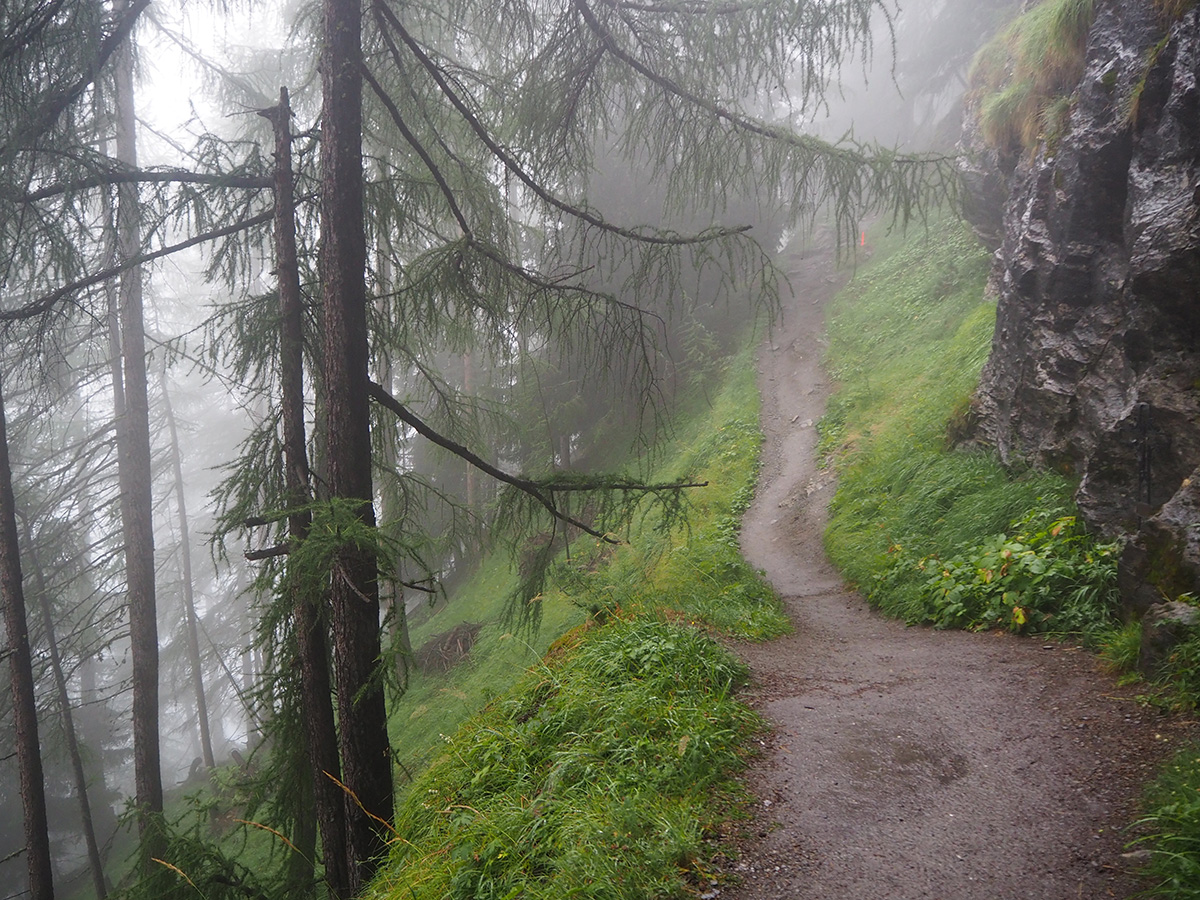
Larch and pine forests coat the steep slopes immediately above Zermatt. Image by Isabella Sheherazade Sanai
Four unmissable summer activities in Zermatt
Hike the Mark Twain Trail. Named after the American writer, it loops upwards and around the mountain from Riffelalp, revealing more and more vast, glaciated peaks at every turn, past high-altitude lakes and meadows, until you reach Gornergrat, the station and observatory at 3,100m with probably the most spectacular 360-degree view in the Alps. The trail is not particularly steep and can be done in three hours, but it’s not for those who have a fear of heights. There are hundreds of other mountain paths, over mountain top and through forest, valley and meadow.
Take advantage of the mountain gastronomy. Zermatt’s mountain huts may look quaint and weathered, but many of them house restaurants of Michelin-star standard, or rustic cuisine of the highest quality, with fine wines from around the world to match. And you need to walk or trail bike to get to them, making them justified. Some of our current favourites are: the Findlerhof, on a forest trail with a mesmerising view of the Matterhorn, where we had fantastic forest cuisine: a local mushroom salad and herbed chocolate fondant, cooked and served by the delightful owner; Restaurant Zum See, in a tiny
hamlet in a lush glade just above Zermatt, where the platter of local air-dried beef and cheese was sublime and the owners charming; Edelweiss, a characterful hut on a cliff directly above the village, accessed only by a short but very steep walk, which felt cosy and atmospheric; and the Whymper Stübe, in the oldest hotel in the village, where Edward Whymper, the English tragic hero who first climbed the Matterhorn in 1865, stayed, and where the fondues are superb and the atmosphere even better.
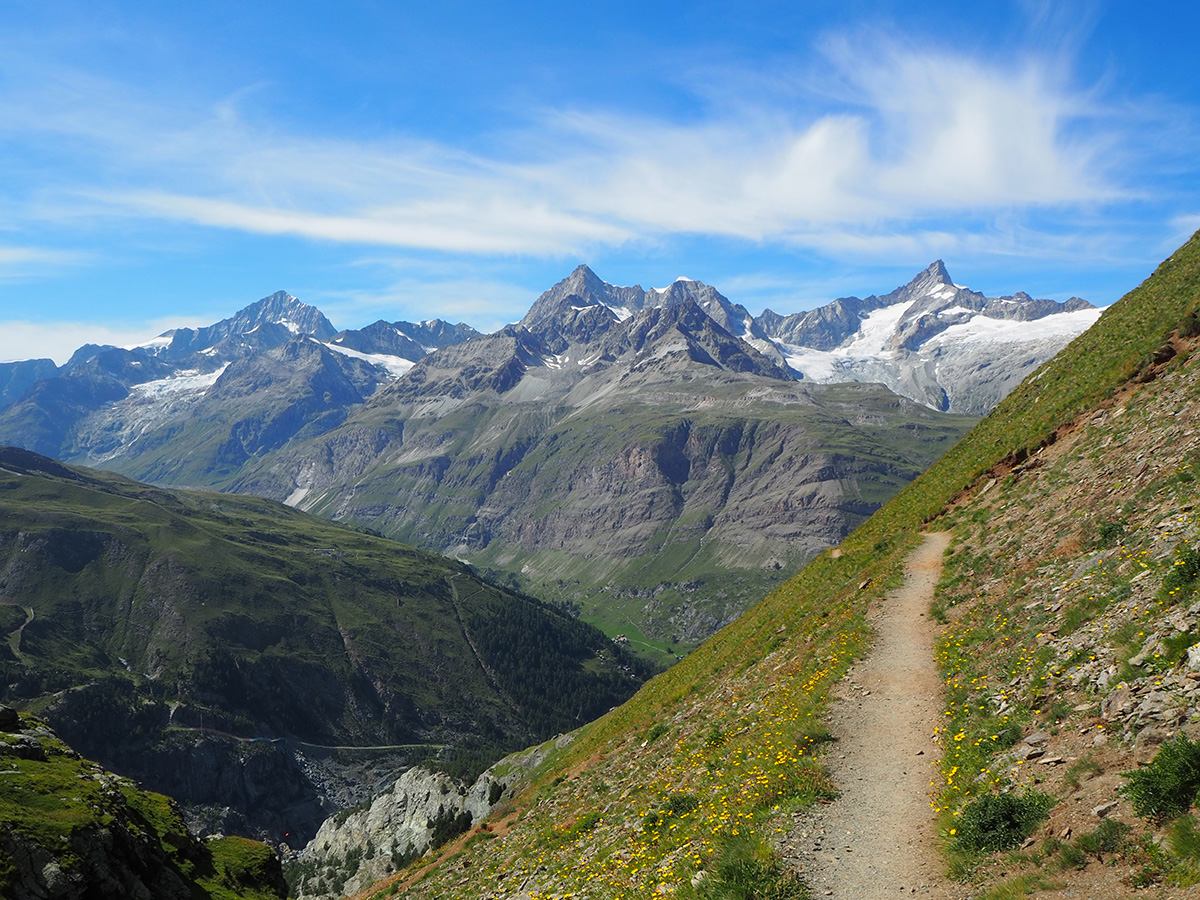
A panoramic path down from Zermatt’s Stellisee lake with the peaks of Dent Blanche, Obergabelhorn and Zinalrothorn in the background. Photograph by Isabella Sheherazade Sanai
Visit the Forest Fun Park. A high-wire park in a forest on the edge of the village, run by mountaineers, its trails, of varying difficulties, are ingeniously devised and variously involve zip-wiring over the river, down above rapids, and across a football pitch, and clambering from treetop to treetop, all in safety and with a stunning view of the Matterhorn.
Climb the Matterhorn. If you’re fit and fearless, plan ahead and book your guide and accommodation, Europe’s most famous mountain can be climbed by capable non-experts. But take heed of advice and guidance: after a gradual decline in accidents in recent years, in 2018 there were at least 10 deaths on the mountain. If you’re not quite up to climbing, a spectacular second best is a hike up to the Hornli Hut, known as Base Camp Matterhorn, on the leg of the mountain, which anyone can do if they are fit and don’t suffer from fear of heights. It’s two hours up from the Schwarzsee lift station, and pretty dramatic in itself.
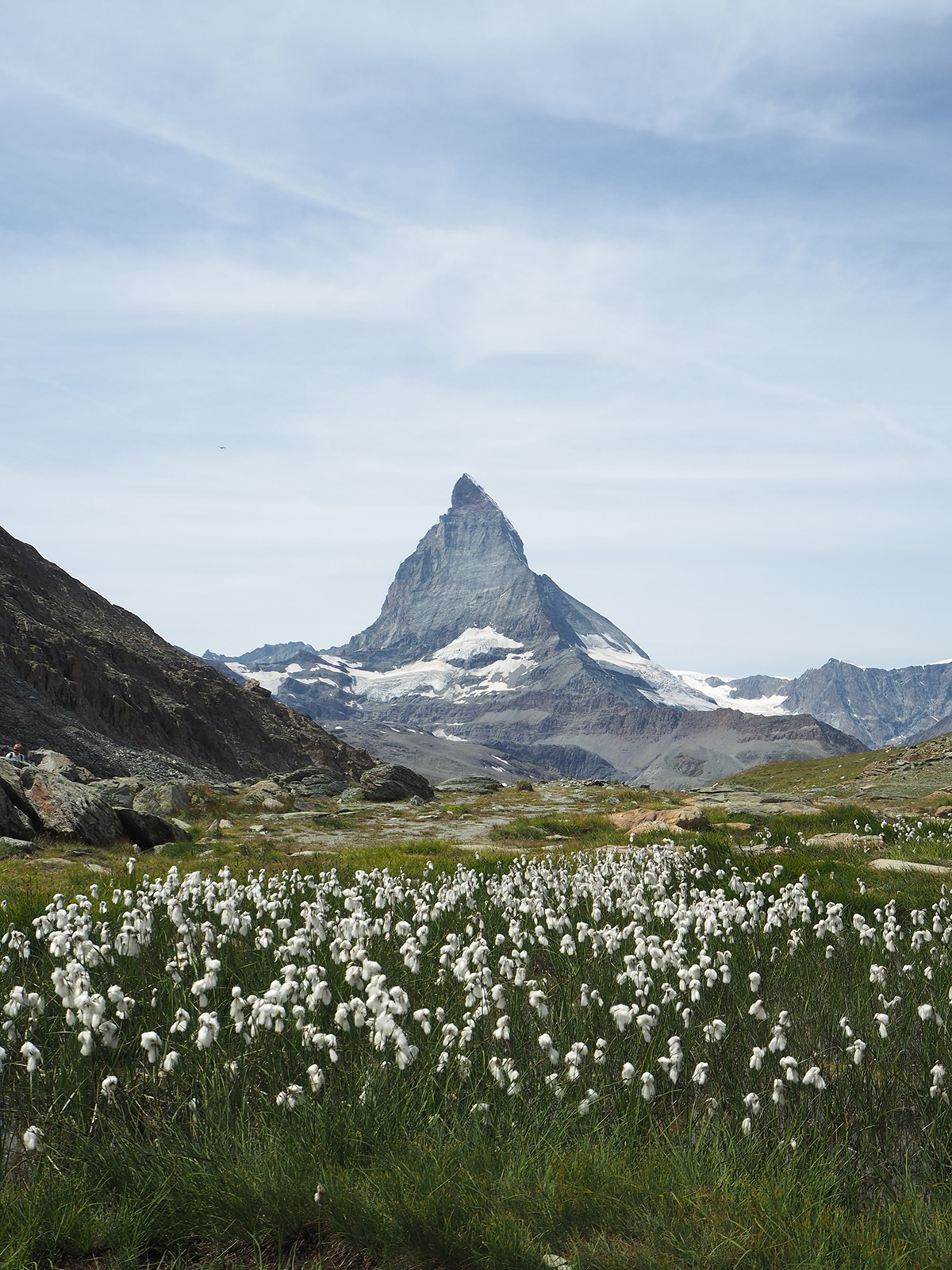
Wildflowers grow in the unique microclimate of Riffelsee, at 2,800m one of the Alps’ highest lakes, protected by ridges from northerly winds. Photograph by Isabella Sheherazade Sanai
Other places to stay
Up in the mountains above the village, there is nowhere that comes close to Riffelalp Resort 2222m. When staying in Zermatt itself, we like to stay in Winkelmatten, a hamlet on its southern edge, at Chalet Banja. Available for private hire, Banja is beautifully built and detailed by a local doctor and his artistic wife, with four floors of exquisite local stone, wood, artefacts and detailing. It sits above a riverbank amid conifer trees, with uninterrupted views up to the Matterhorn; on the lowest floor is Zermatt’s biggest private (indoor) pool, with the same views, and a gym and sauna and steam rooms. The Alpine library in the atmospheric kitchen/living/dining area is engrossing.
This article was originally published in the Spring 2020 Issue.


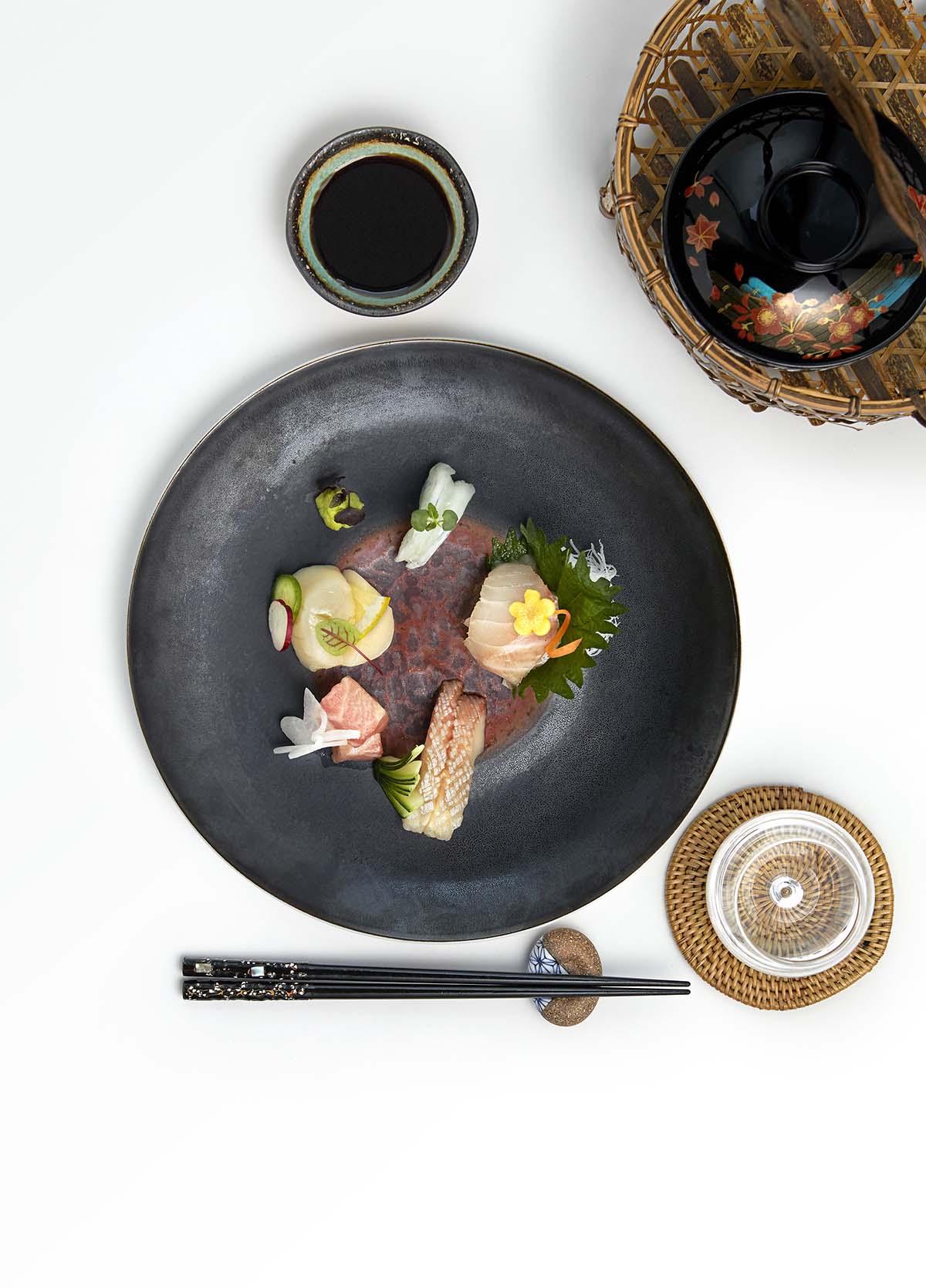





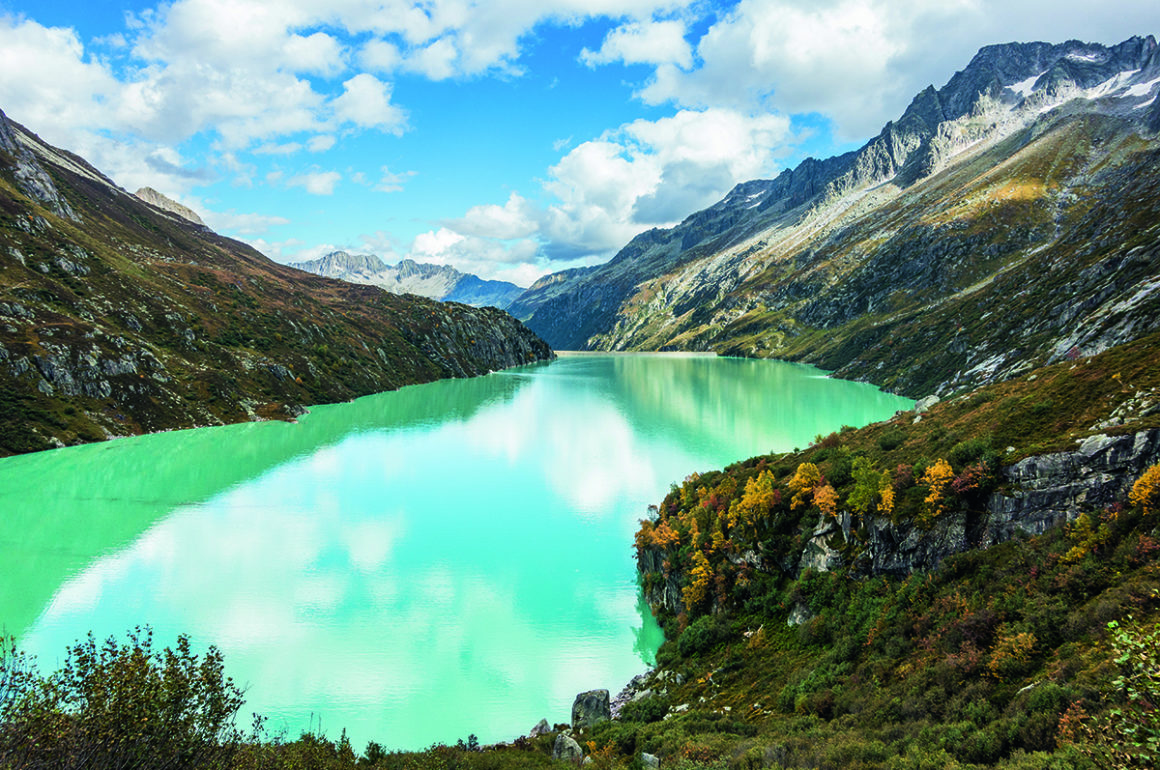
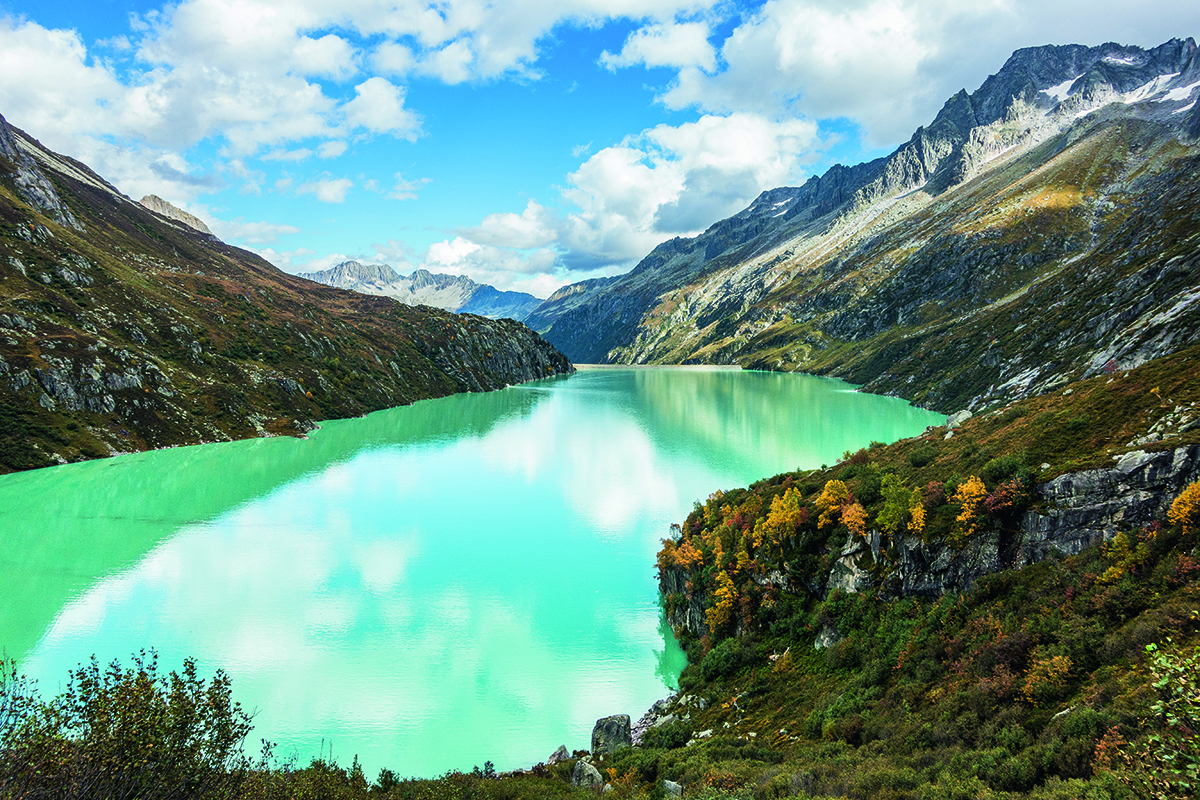
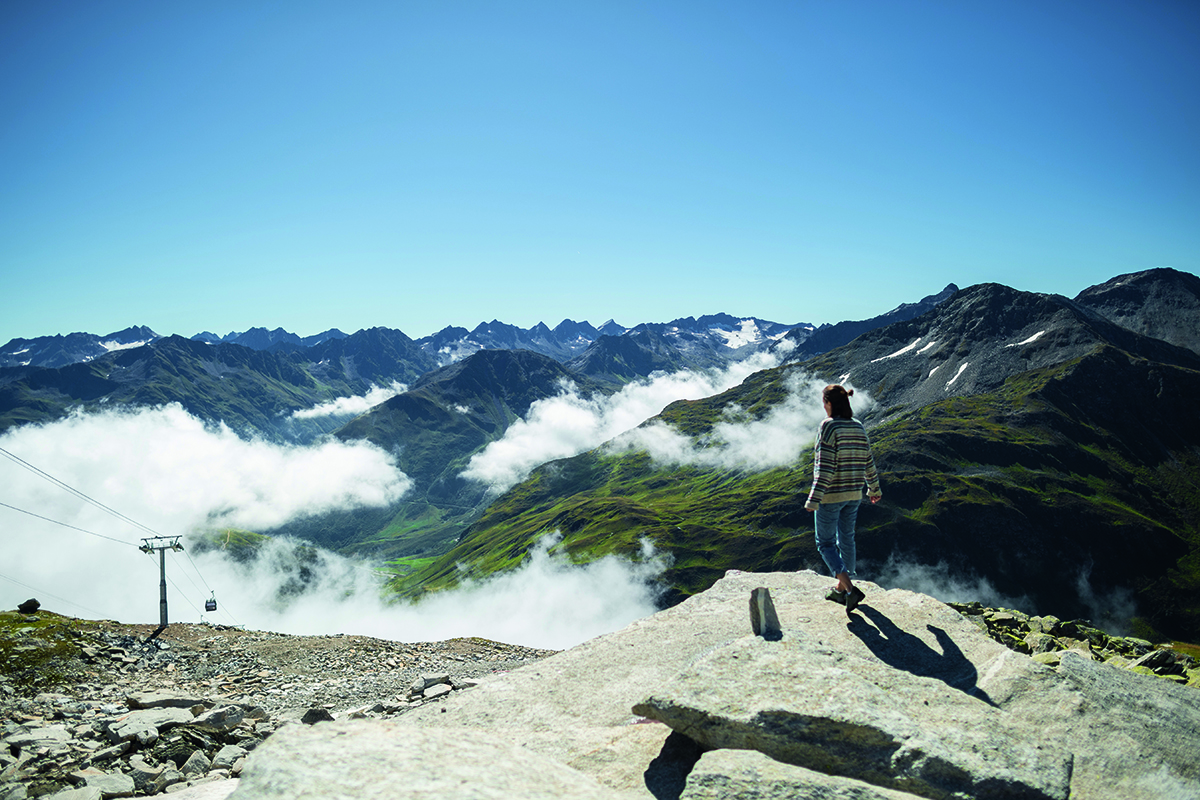
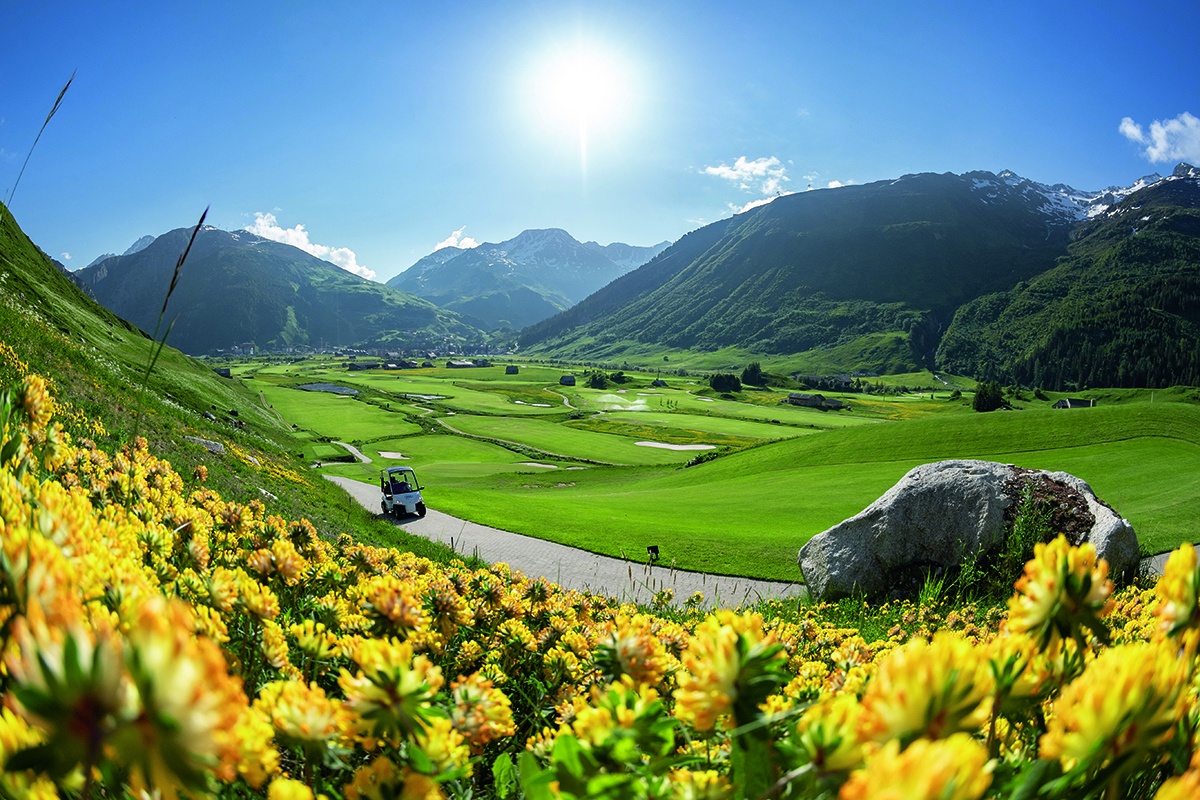
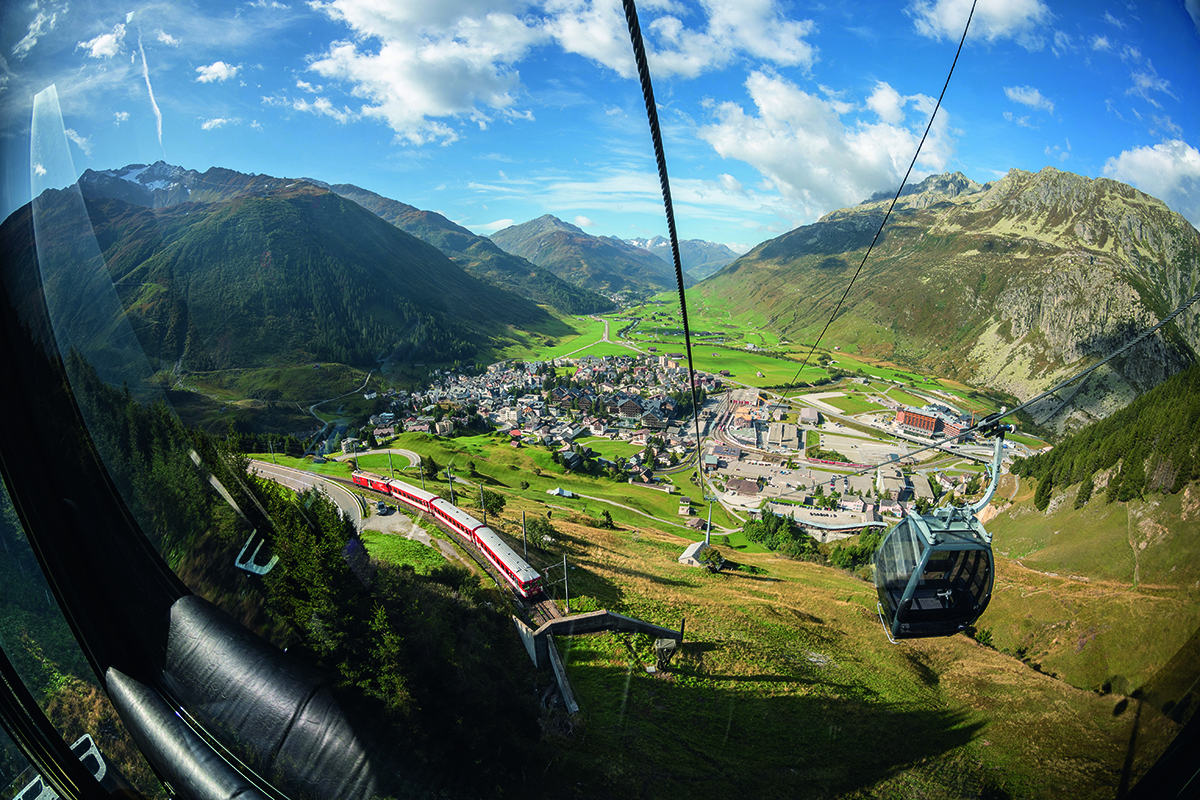
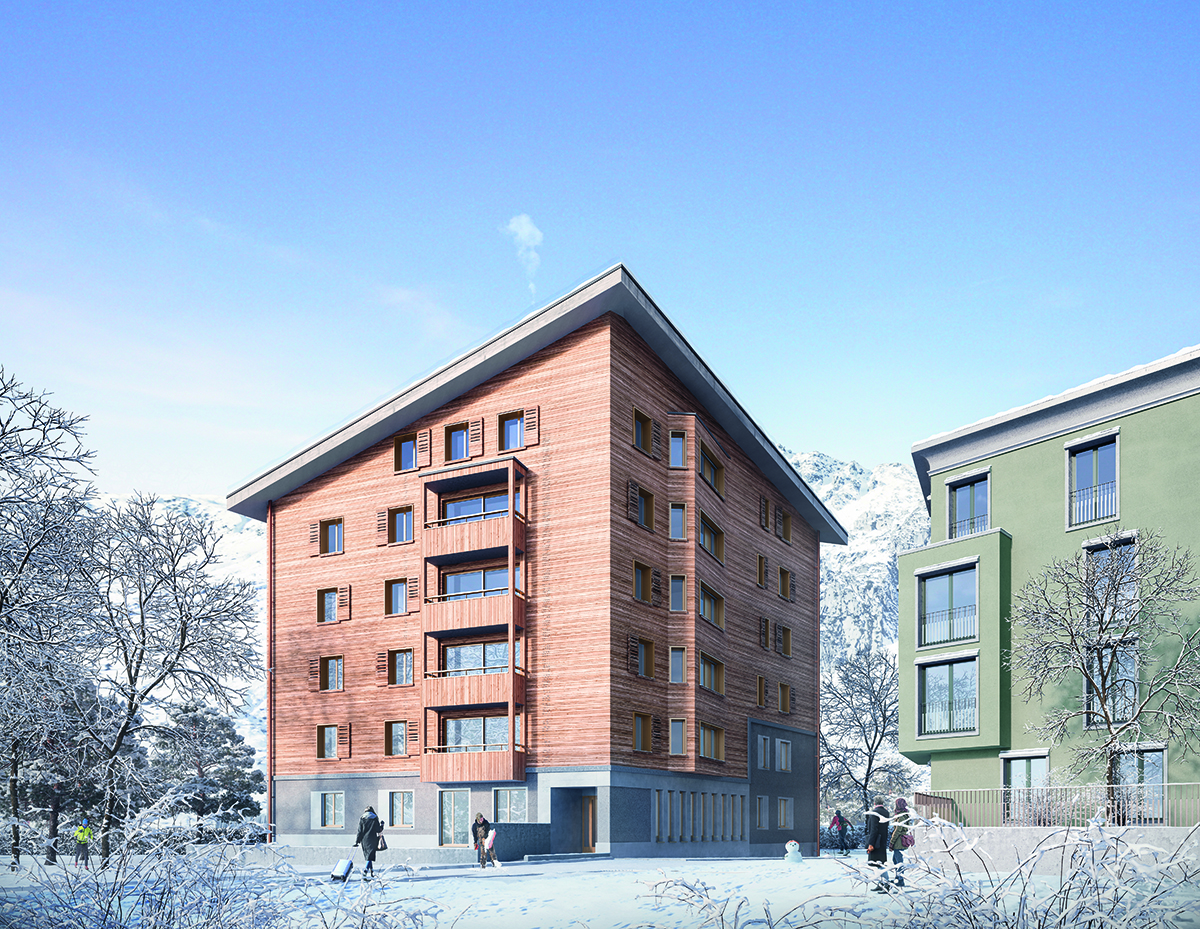
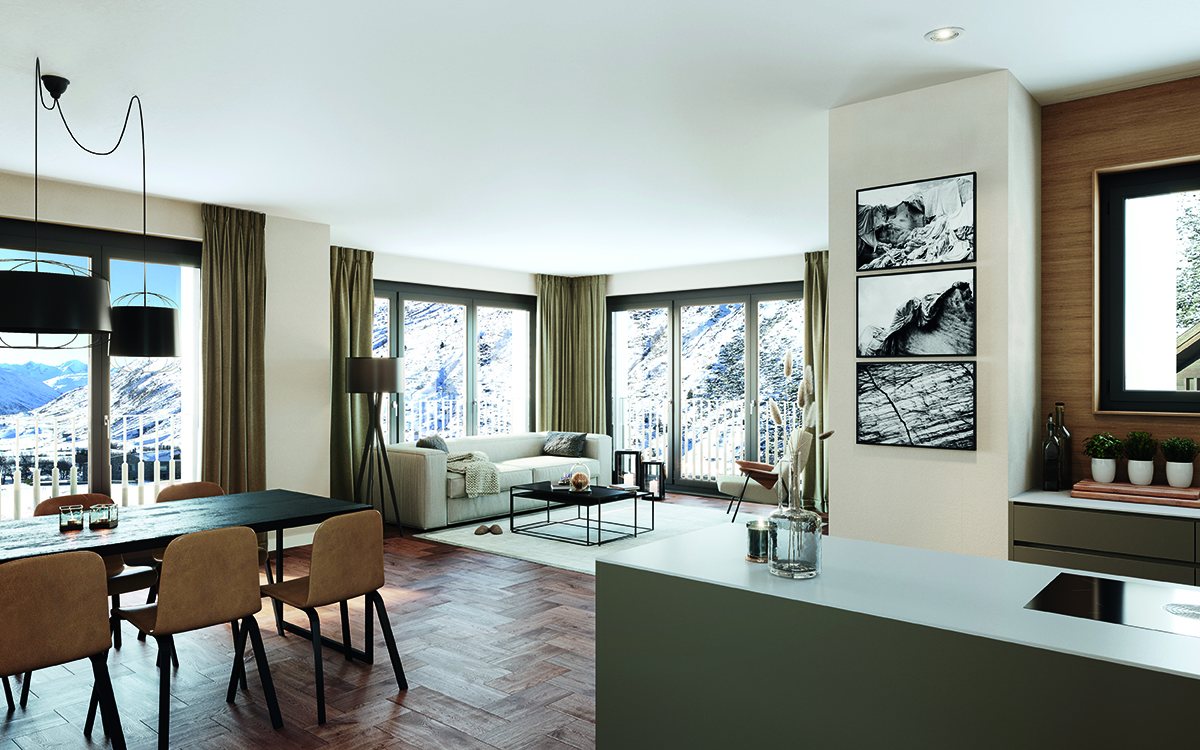
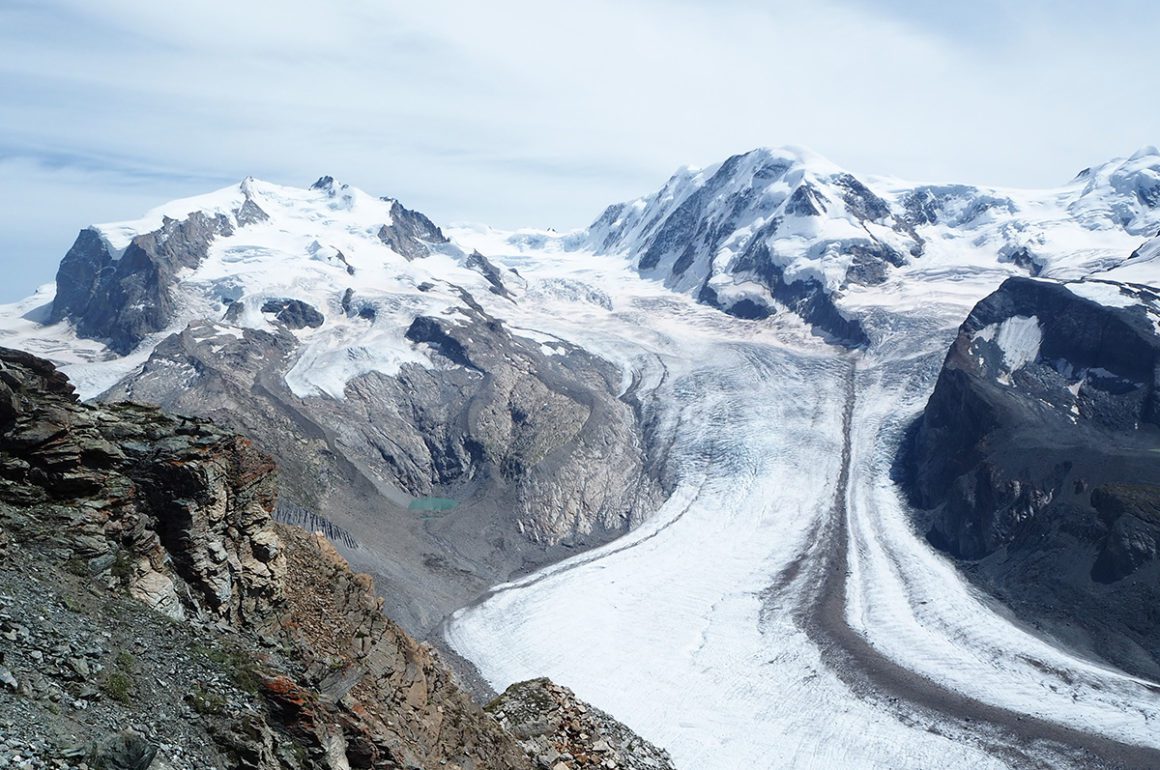















Recent Comments